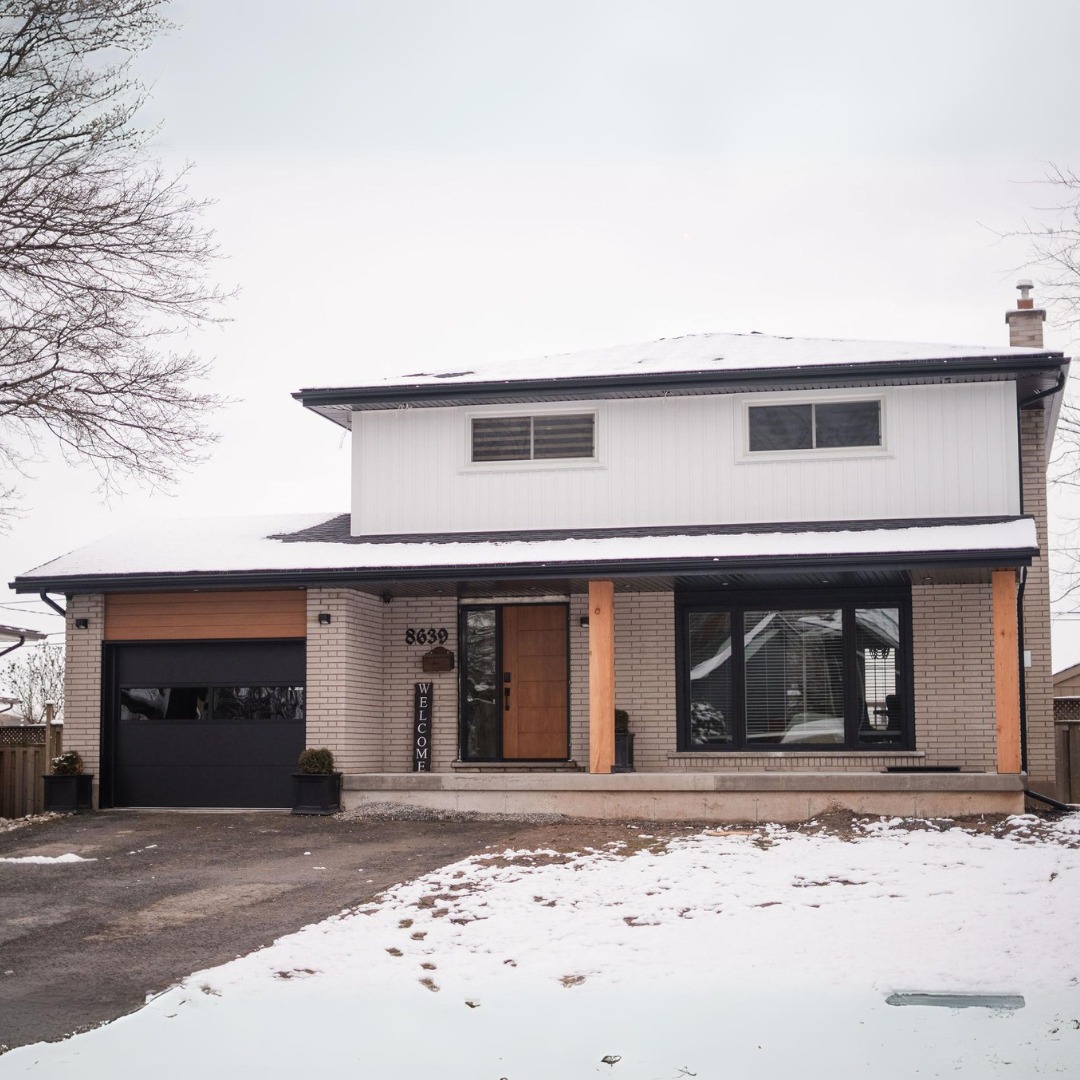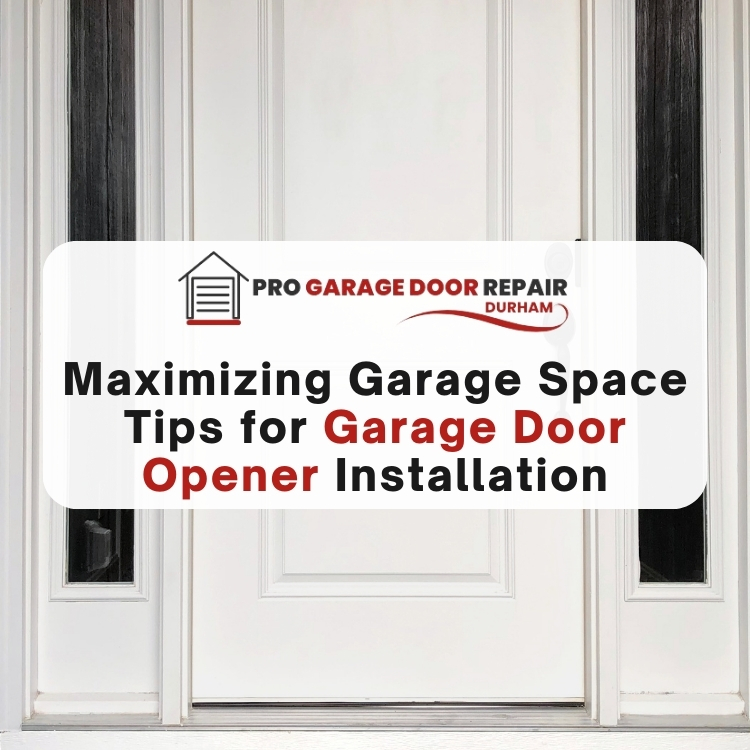The frigid temperatures and intense weather conditions of the winter months can wreak havoc on your garage door if you’re not diligently staying on top of maintenance. But putting in a little TLC to seal out drafts, lubricate moving parts, clear snow buildup and more doesn’t have to be hard. Follow this guide to learn all the garage door care tasks experts recommend for smooth operation plus troubleshooting issues all winter long. Implementing these preventative maintenance steps now will save you money, hassles and continuous repair bills for years to come.
What Signs Indicate You Should Service Your Garage Door Before Winter?
Catching minor garage door issues early and servicing any problem areas is crucial. But how do you know it’s time to call a pro for adjustments and part replacements if you don’t see any blatant damage? Be on the lookout for these subtle signs that your garage door needs some TLC before frigid air sets in:
- Unusual Noises – Squeaky rollers, grinding gears or clanging cables all indicate lubrication is needed pronto. Take note of any new sounds outside the ordinary hum of the motor and moving door.
- Visible Damage – Inspect panels, hinges, rollers and hardware mounts closely for early wear-and-tear in the form of cracks, dents and loose screws which can worsen into much larger issues if left unaddressed.
- Sticking When Opening/Closing – Doors that catch briefly or jerk sporadically could have minor alignment problems or just need a good lubricating. Best to troubleshoot the culprit early.
- Sagging Panels – If your upper panels or the whole door face looks slightly drooped downward, this suggests weakened extension springs. Have their tension and stability reinforces before doors freeze in place from the cold.
- Missing or Cracked Weather Stripping – Those thin seals around the exterior edges block outside air from infiltrating into your garage. Even small gaps or tears can make a difference in better insulating your space so replace them.
Ignoring any of the above subtle signs now makes you much more likely to wind up stuck in the freezing cold with a completely jammed door come that first big winter storm. And no one wants to deal with that nightmare scenario!
Why a Garage Door Tune-Up is Crucial Before Winter Sets In

Think of your garage door tune-up as its equivalent to yearly scheduled maintenance for your car. Technicians thoroughly examine every component and make adjustments to avoid any potential problems cropping up when you least expect it. Here’s why a tune-up is so essential prepping your system for the intense temperature changes, precipitation and other winter conditions right around the corner:
- Ensures Parts Function Optimally – From hinges to sensors to cables and motor operation, a tune-up verifies every inch of your garage door is working as designed without unusual wear for the upcoming season.
- Allows Early Repairs – Detecting and replacing problematic parts is vastly cheaper than emergency repairs later on. Worn sections can be reinforced and lubrication top-offs applied during the tuneup before small issues turn into frozen doors and costly part replacements.
- Reduces Getting Stranded Outside – There’s nothing worse than being trapped in freezing weather due to a busted garage door not opening. A preventative tuneup drastically cuts down on the chances of operational failure at the worst possible moment.
- Prevents Further Damage – Letting minor issues go leads to more expansive damage over time as other components overcompensate and eventually burn out from strain. One small untreated crack in a spring for example can eventually snap the entire system.
- Saves Money Long Term – Yes, a tuneup is an added seasonal expense but the cost pales in comparison to entire door replacements that degraded parts often result in without this preventative care. Think of inspection costs as insurance against exorbitant emergency repair bills down the road.
Key Parts Examined & Tasks Performed During Tune-Ups
Wondering exactly what garage door technicians check over and service during a standard pre-winter tune-up visit? They thoroughly examine the entire mechanical infrastructure from top to bottom, making adjustments and replacing worn parts as needed. Here’s a general overview:
- Lubricate Friction Points – Hinges, j-arms, bearings, rollers and pulleys all see lubricant top-offs to reduce grinding friction
- Tighten Loose Hardware – Vibration can slowly loosen screws over the year so they’re tightened back down to avoid cracking issues from repeatedly coming loose/tight again.
- Spring Tension Adjustments – Extension spring stability and torque levels are checked to meet proper operational standards for balancing door weight.
- Track Inspections – Alignment is adjusted if needed so rollers glide smoothly without catching or jerking
- Balance Testing – Doors shouldn’t favor one side and weight distribution might need correction to open uniformly without veering or getting stuck.
- Weather Seal Replacements – Cracked or missing exterior seal strips get replaced to maintain insulation factor keeping cold air out.
- Safety System Checks – Sensors triggering auto-reverse and such are tested to confirm proper functionality for safety.
While technicians have proprietary tune up checklists for each brand and model, that covers the general scope. Sound complicated? It’s nothing to worry about. Reputable companies handle everything during an appointment. Just sit back until they give your door the green thumbs up!
How Frigid Winter Temps Can Affect Garage Door Function
Now that you know why prevention is so pivotal before winter, it helps to understand exactly what seasonal conditions can negatively impact operations if you skip out on tune-up care. Here’s an overview of how plummeting temperatures coupled with precipitation, wind and other environmental factors bears down hard on garage doors:
- Metal Component Contraction – As temperatures drop, the metal in tracks, springs, bearings, cables and hardware becomes more brittle and inflexible. Parts shrink and contract in the cold, potentially throwing alignment off and making motion stiff.
- Snow & Ice Buildup – Obviously heavy frozen precipitation like sleet storms lead to thick ice coating on exterior surfaces and buried tracks. But even lighter snow can freeze into dense chunks around rollers and hardware that impede motion.
- Wind & Draft Problems – Blustery cold winter winds seek out any little exterior cracks or gaps around framing as an infiltration entry point. Even small leaks make a huge difference in heating efficiency.
- Road Salt & Chemical Corrosion – The very deicers that make winter roads and walkways safer to traverse can wreak havoc on metal garage door components. Salt compounds and other chemicals eat away at their protective coatings.
Clearly winter’s wrath doesn’t pull any punches in its attempts to destroy smooth mechanical function. But armed with the right maintenance game plan, your garage door stands a fighting chance!
Effectively Shielding & Insulating Your Garage Door for Winter

Okay, so winter’s coming and there’s no stopping the harsh environmental effects ahead. But you can take key steps to both shield exterior surfaces from problems and better insulate interior gaps. Here’s your game plan for winterizing:
- Caulk Framing Gaps – Seal up any cracks or openings where exterior walls meet the door with quality caulk. This traps existing warmth inside better.
- Install Storm Doors – Interior storm doors essentially create an air lock minimizing drafts from the outside door’s leaks. Best for garages frequently accessed in winter.
- Add Insulation – Getting thicker insulation installed inside improves energy efficiency greatly by better trapping interior air. DIY blanket/panel options work too.
- Apply Silicone Spray – Use silicone lubricant sprays designed specifically to repel ice adhesion to treat exterior tracks and hardware. Helps prevent freezing precipitation from gumming up motion.
- Reinforce Sealing Strips – Ensure sealing strips around the exterior door edges are firmly attached and have no gaps, tears or cracks that let cold air infiltrate through. Replace them religiously as needed each winter.
With the right winterizing game plan detailed above, you can help reduce operational issues related to cold and precipitation. But maintaining that protection is also paramount for sustained success as the frigid months drag on.
Winter Garage Door Care & Operation Tips

Okay, your garage door now has its seal of approval from the technician after a thorough tune-up and you’ve winterized it against the elements as much as possible too. But your seasonal maintenance duties aren’t completely done yet. You also have to change how you manually operate the door to avoid issues. Follow these best practice guidelines all winter:
- Check Operation Manually First – Before just hitting the remote opener’s button and blazing out through an unopened door, manually pull it open fully to confirm smooth operation and avoid crashes.
- Watch for Early Signs of Freezing – If doors become extra stiff to open manually or slide sluggishly, address freezing issues immediately before it escalates and leads to everything seizing up.
- Use Approved Deicers – Avoid damaging finishes with salt and abrasives. Instead use liquid deicers specifically designed for use on garage doors to melt ice off metal surfaces safely. Test them in an inconspicuous spot first to confirm metal compatibility.
- Don’t Force It When Stuck – Trying to add extra upward force against frozen rollers or ice-buried tracks will likely just damage components. Thaw safely with a hair dryer if needed instead. Forcing it breaks stuff!
- Shovel Heavy Snow Before Operating – Clear piled up powder weighting down heavily on the tops of panels. The extra strain of all that load could bend components or impede functioning.
Remember, just hitting the remote and blazing through unchecked can spell disaster if stuff has frozen overnight or heavy snow is resting on top. Always confirm manually first that nothing is stuck or buried!
Safely Dealing With Snow & Ice Buildup
Even with diligent maintenance and preparations, sometimes ice and snow still sneak through posing operational threats. But it’s pivotal to address buildup extremely carefully to avoid damaging hardware of finishing. Here’s your safe game plan for removal:
- Never Force or Pry At Stuck Doors – Aggressive upward prying or pounding frozen sections only intensifies seizing and damages components underneath the ice further.
- Thaw With Warm Air Instead – Point a hairdryer selectively at stuck rollers or track sections once identified and melt problem areas carefully without pressure.
- Use Plastic Instead of Metal for Clearing – Metal shovels and scrapers can easily scratch paint and damage sections. Opt for sturdy plastic counterparts when scraping ice off surfaces.
- Clear Walkways Too for Safer Access – Prevent slips by the door because chances are you’ll have your hands full with stuff when entering anyway. Give yourself accident-free access.
Remember to never chip or hack at heavy ice coverage. Safety first! Melt problem areas gradually instead or call for professional assistance safely removing built up frozen water caking mechanical infrastructure if it’s too extensive for DIY removal.
Recognizing When Pro Help is Needed for Winter Garage Door Repairs
While preventative maintenance goes a long way, even garage doors in tip-top shape experience some issues after prolonged exposure to punishing winter conditions. But how do you recognize when a problem is beyond your DIY capabilities? Here are scenarios where calling the pros for repairs is needed:
- Door Frozen Halfway Up – Ice and contraction often completely stops doors from lowering all the way. Partial freezing indicates alignment issues, broken springs or unbalanced weight distribution as well.
- Damage Beyond Surface Level – If you accidentally bent panels trying to force open a stuck door or dented tracks clearing ice, professionals need to assess and fix mangled components.
- Major Mechanical Issues Suspected – Odd noises from cables, broken springs, grinding opener gears or other symptoms point to internal damages best left to the experts. Don’t let things catastrophically fail!
- Icing & Freezing Problems Persist – If doors keep freezing despite your vigilant maintained and deicing attempts, something likely needs adjustment or part replacements to permanently solve seizing.
In scenarios above, save yourself headaches and call for professional assessments. Technicians have the needed tools, materials and expertise to get stuck, broken doors operational again after winter’s effects temporarily derailed them. Attempting extensive repairs on your own with minimal supplies rarely ends well. Learn when to call in the pros!
Warning Signs Requiring a Garage Door Technician
Wondering specifically what red flags should prompt picking up the phone and calling a garage door repair company ASAP when problems crop up in winter? Keep an eye out for these scenarios:
- Grinding & Clunking Noises – Strange sounds from straining components can precede catastrophic failure of worn parts. Address them promptly.
- Misaligned Tracks – If doors veer sideways along the ceiling or walls, ice has likely knocked tracks out of alignment needing realignment.
- Sagging Panels – Visible drooping suggests broken spring tension problems requiring replacements before the door possibly detaches or gets stuck open unable to close.
- Severe External Seal Damage – Large gaps or falling off strips beat down insulation capacity even when temperatures eventually warm back up a bit.
Don’t downplay unusual noises, visible damage or sagging assuming they’ll fix themselves later on. Call in pros right away after noticing these issues to nip escalation in the bud immediately. The sooner winter weather-related repairs are handled, the less expansive they usually are.
Conclusion
Preparing your garage door for whatever winter wants to ruthlessly throw its way doesn’t have to be an endless game of catch up with repair bills and operational headaches. Follow the preventative seasonal maintenance tips and visual warning signs covered here to stop problems in their tracks before they have the chance to intensify after every snow storm or stretch of subzero days. Stay diligently vigilant in checking seals, lubricating parts, clearing precipitation buildups gently and looking for early signs of trouble. Combine those best practices with knowing when professional Garage door repair calls are necessary, and you’ll breeze your way through winter with nary an issue in sight!
Frequently Asked Questions
Q: How often should I get garage door tune-ups annually?
A: One tune-up right before winter is typically sufficient for most homeowners if no other issues have cropped up throughout the year prior. Perform visual inspections yourself periodically as well between appointments.
Q: What temperature extremes start causing operational problems?
A: Most insulated garage doors can tolerate temperatures down to at least 0°F before contraction, freezing moisture and other issues occur. Once temps drop below -15°F though, all bets are off.
Q: Which supplies should I keep on-hand for winter garage door emergencies?
A: Having deicer spray made specifically for garage doors, a few plastic shovels, lubricant, a heat source like a hairdryer, battery powered lights in case of power failure, and extra weather sealing strips easily accessible in your garage can prove invaluable for both proactive and reactive winter maintenance needs.




